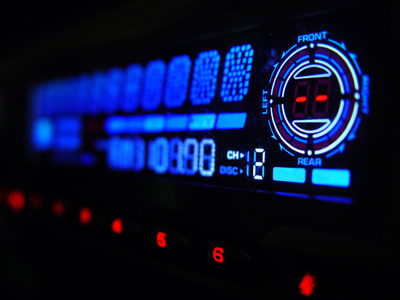
Ask the AI Tutor
Need help with Waves - The use of Waves in Communications? Ask our AI Tutor!
AI Tutor - Lucy
Connecting with Tutor...
Please wait while we establish connection

Without waves, a radio would be useless!
Waves - The use of Waves in Communications
This GCSE Physics quiz explores how waves carry information, from radio broadcasts and mobile phones to satellite links and fibre optics sending signals rapidly across the world.
1 .
How is the speed of sound calculated?
Distance divided by time
Time divided by distance
Distance multiplied by time
Time multiplied by distance
The speed of sound is treated the same way as calculating any other speed by dividing the time taken for an object to reach a point B from A. A question in an exam may ask you to work out the speed of sound to answer another part of a question, or if not this will be given to you
2 .
Which of the following statements is true?
The speed of sound is the same for all materials
The speed of sound is different for different materials
The only material that affects the speed of sound is water
Sound can only travel in a vacuum
This is the same for all waves, for example, light travels more slowly in glass than in air or a vacuum
3 .
Which of the following types of waves do not need any matter to travel in?
Electromagnetic waves
Sound waves
Water waves
Mechanical waves
They are vibrations of electric and magnetic fields that exist throughout the universe
4 .
Which of the following statements is true?
Waves all have the same amplitude
Waves carry energy
Waves cannot be used to transmit signals
Waves do not vibrate
All waves carry energy
5 .
Which of the following waves are transverse?
Sound waves and mechanical waves
Water waves and sound waves
Electromagnetic waves and sound waves
Electromagnetic waves and water waves
The vibrations are perpendicular to the direction the energy is travelling
6 .
Which of the following waves are longitudinal?
Sound waves
Electromagnetic waves
Water waves
Infra-red waves
Sound waves travel by exchanging vibrational energy between nearby particles. If there are no particles then the sound wave cannot be transmitted
7 .
A wave machine produces 15 waves per second. What is the frequency of the waves?
10 Hz
0.06 Hz
15 Hz
20 Hz
One hertz is one wave per second
8 .
If the waves above travel 10 metres in 5 seconds, what is the speed of the waves?
1 m/s
2 m/s
4 m/s
0.5 m/s
Speed = distance divided by time
9 .
Considering your answers to question 7 and 8, what is the wavelength of the waves produced by the wave machine?
0.13 m
0.25 m
0.50 m
0.75 m
The wavelength of any wave is its speed divided by its frequency
10 .
What is the wavelength of a wave?
The distance from a crest of a wave to a trough of the next wave
The distance between four crests of waves
The distance between any point on one wave to the same point on the next wave
The distance between four troughs of waves
It is usually drawn as being from crest to crest or trough to trough
**Unlimited Quizzes Await You! 🚀**
Hey there, quiz champ! 🌟 You've already tackled today's free questions.
Ready for more?
Ready for more?
🔓 Unlock UNLIMITED Quizzes and challenge yourself every day. But that's
not all...
not all...
🔥 As a Subscriber you can join our thrilling "Daily Streak" against other
quizzers. Try to win a coveted spot on our Hall of Fame Page.
quizzers. Try to win a coveted spot on our Hall of Fame Page.
Don't miss out! Join us now and keep the fun rolling. 🎉
**Unlimited Quizzes Await You! 🚀**
Hey there, quiz champ! 🌟 You've already tackled today's free questions. Ready for more?
🔓 Unlock UNLIMITED Quizzes and challenge yourself every day. But that's not all...
🔥 As a Subscriber you can join our thrilling "Daily Streak" against other quizzers. Try to win a coveted spot on our Hall of Fame Page.
Don't miss out! Join us now and keep the fun rolling. 🎉






